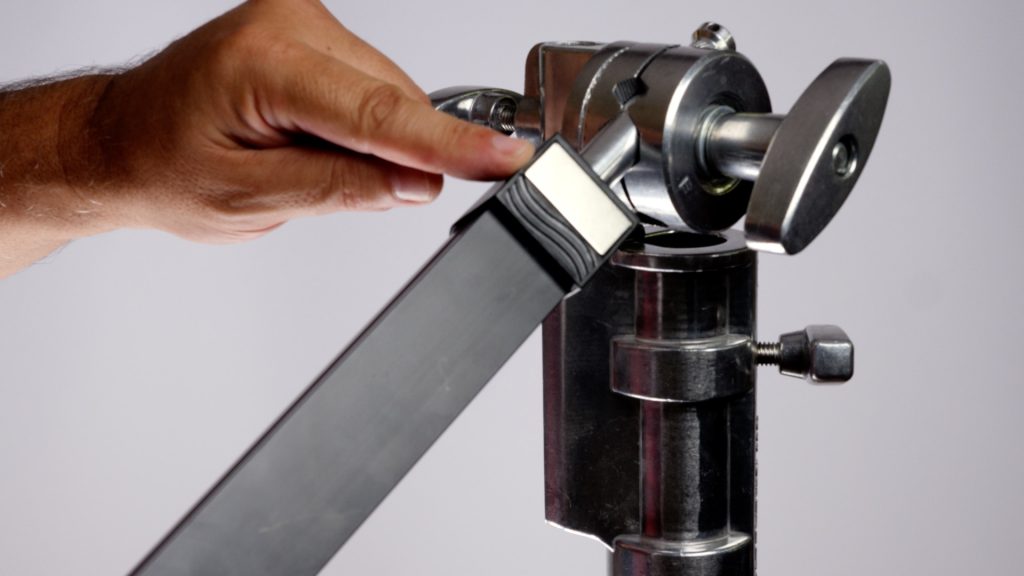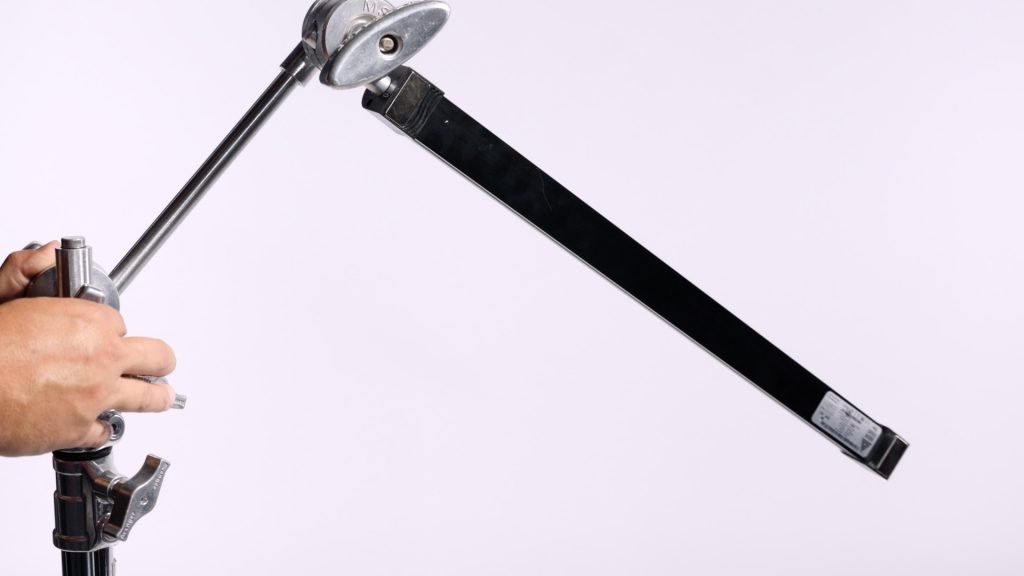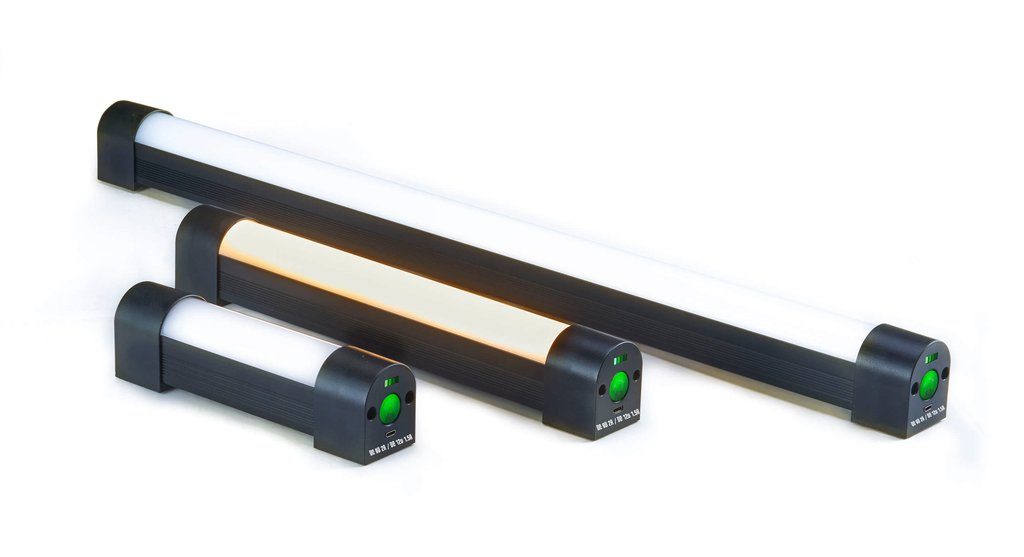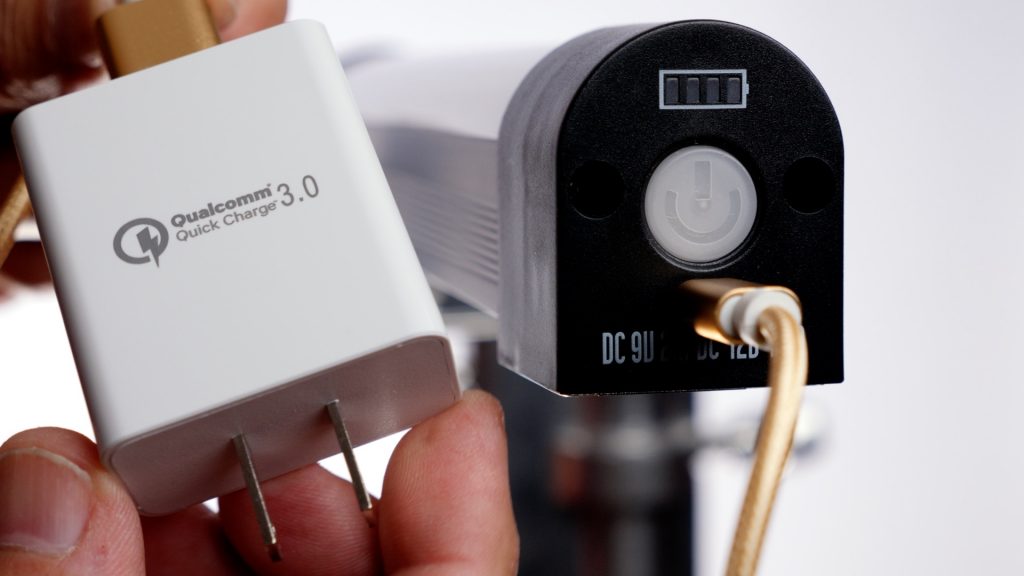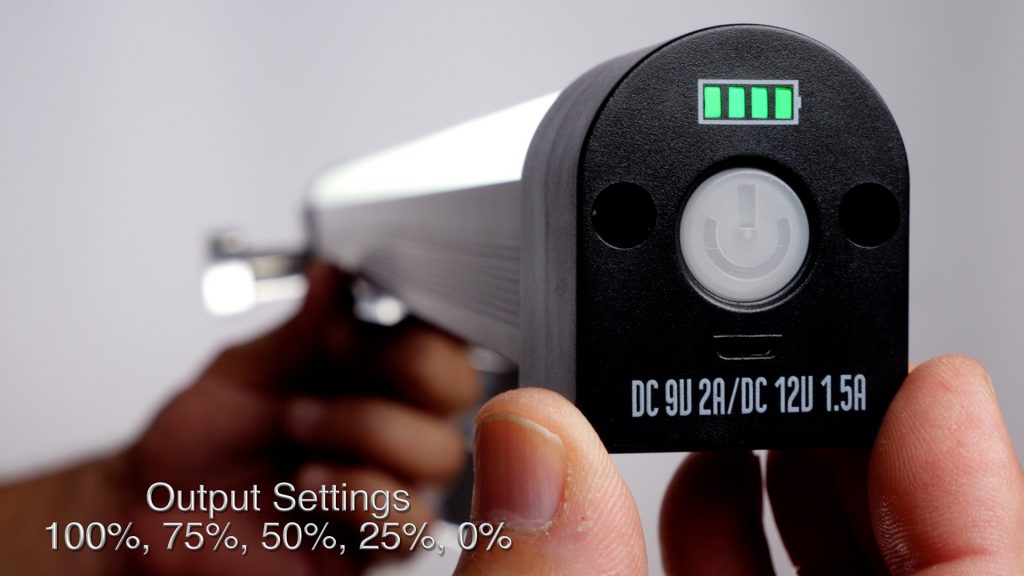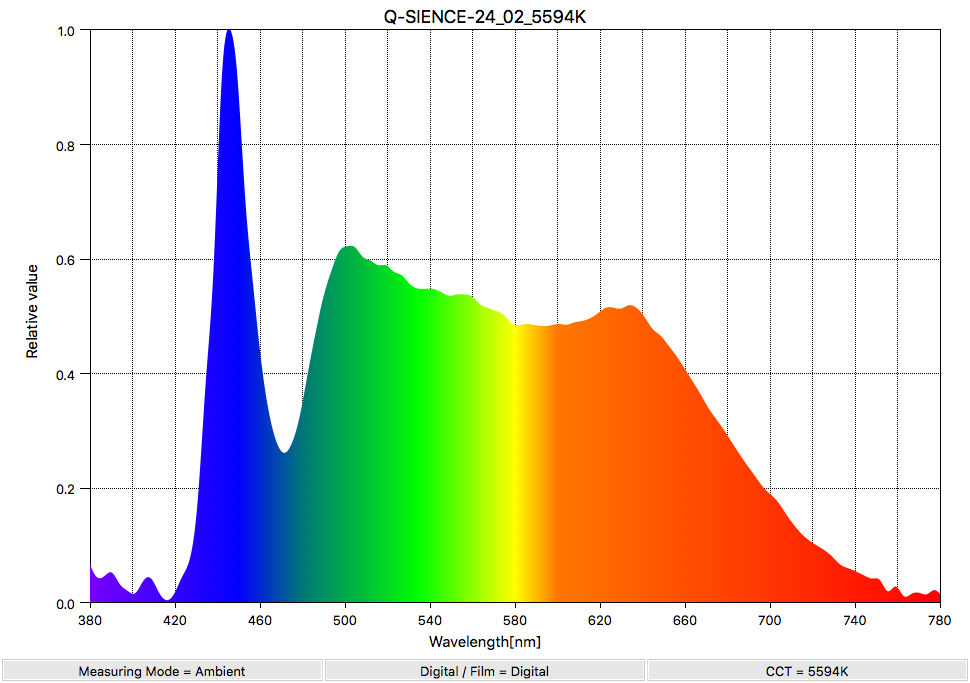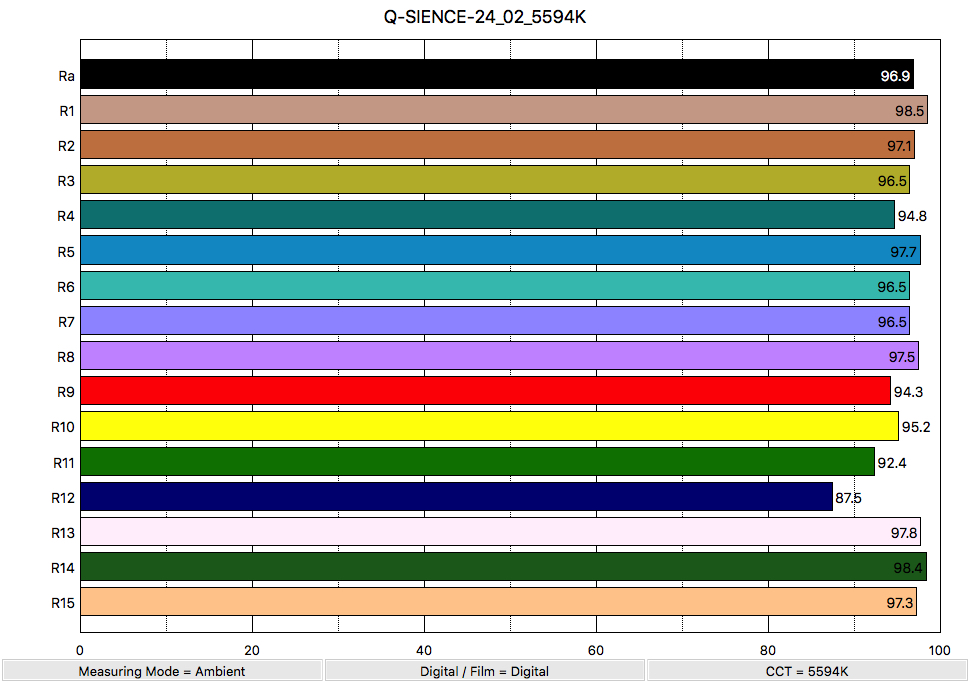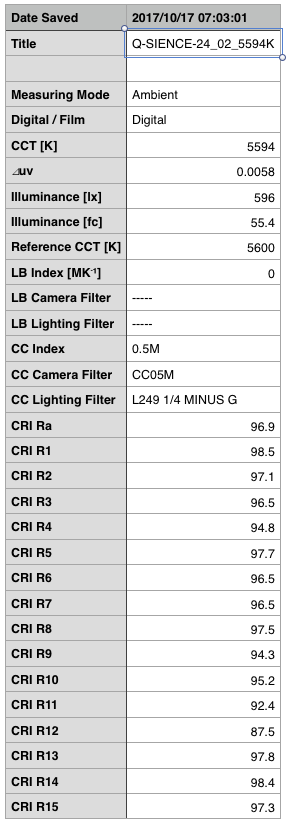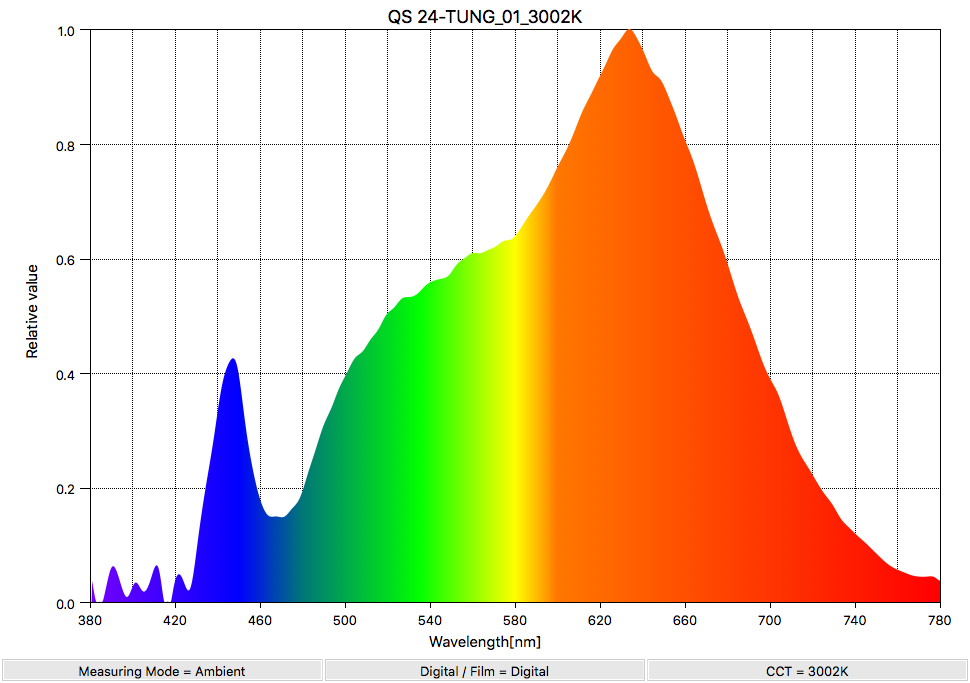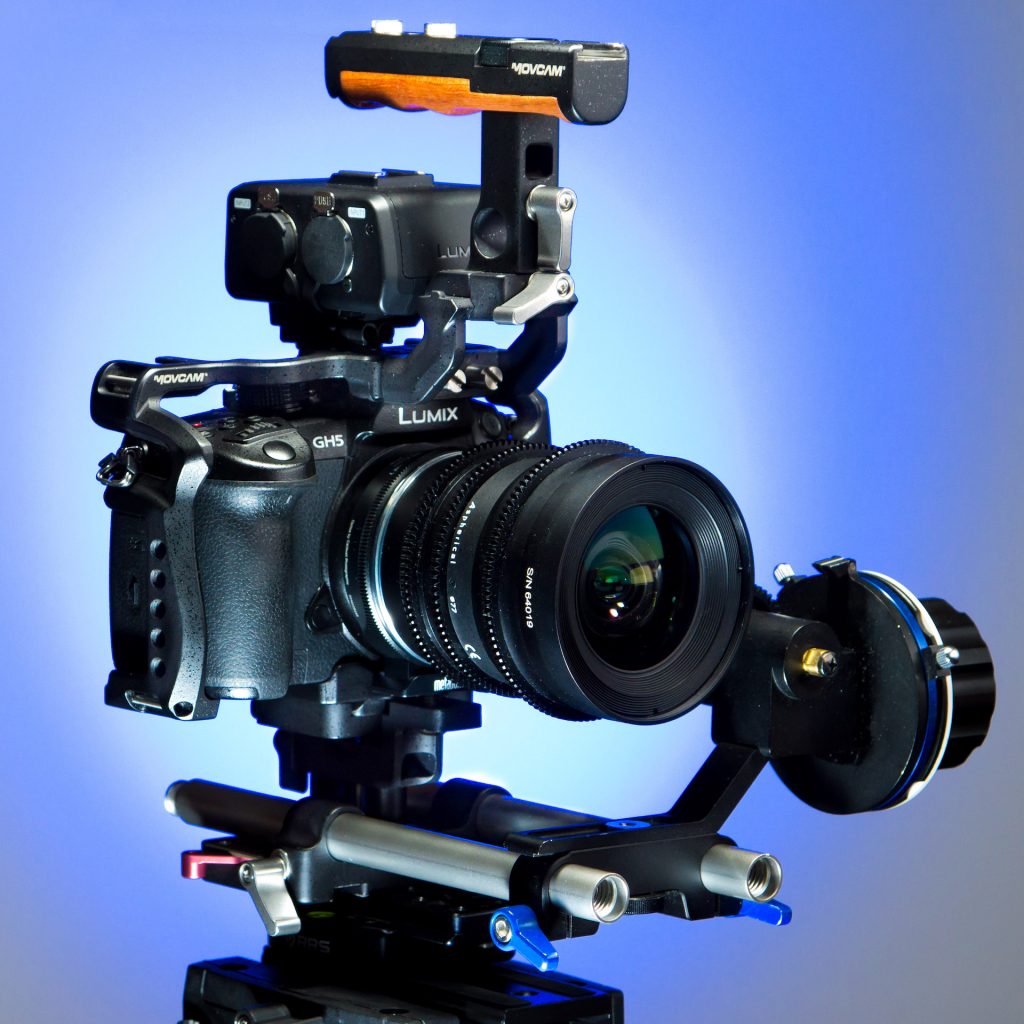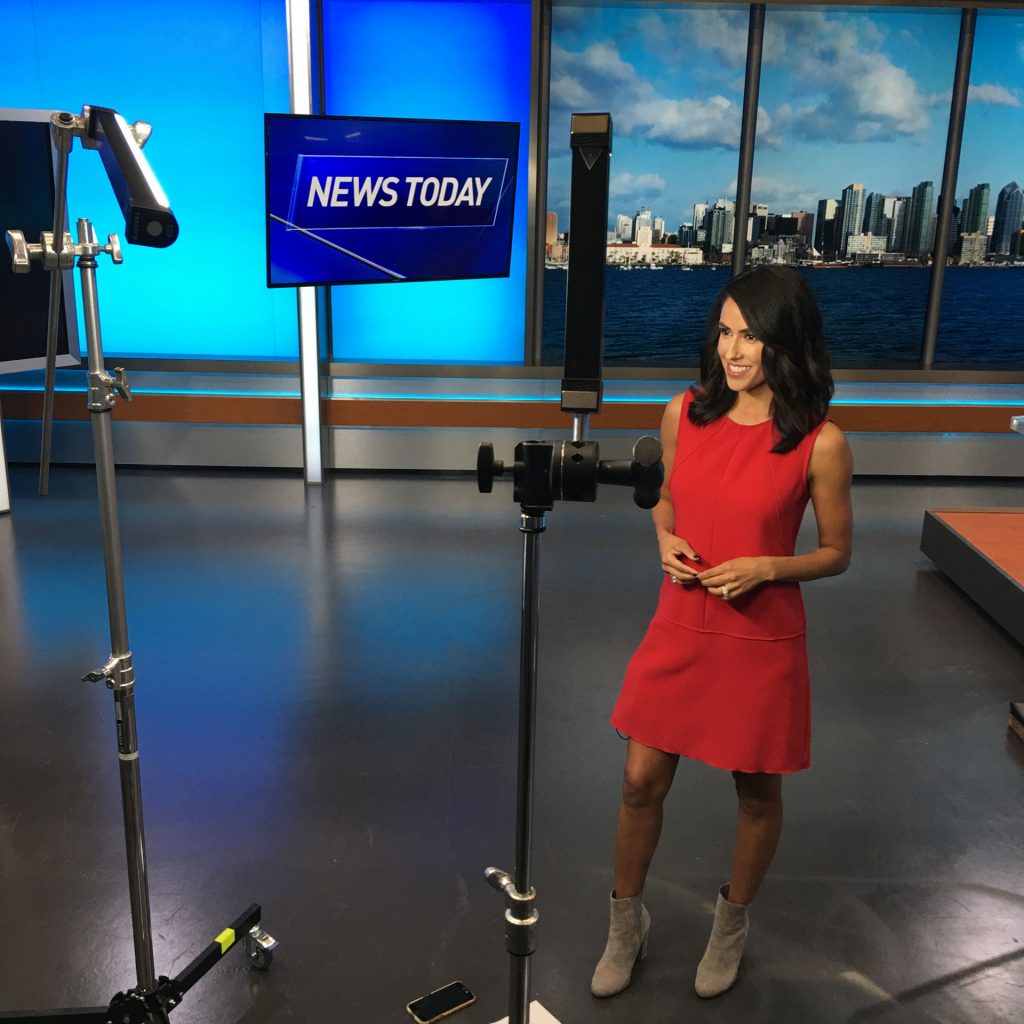When it comes to lighting for video production we have so many choices. Before it was easy. Tungsten or HMI. Well, nowadays LED lamps and fixtures are really improving on color and output and the next big thing is RGB. Okay well, I must digress. Let’s stick with just LED and how about one that is a bi-color tube style fixture.
Quasar Science has been the leader in tube LED fixtures. You will see them used on a lot of Hollywood sets and productions. Their popular Q-LED X-Crossfade lamps are great for Kino Flo retrofits. Brighter than the Diva bulbs and bi-color makes them a very “Diva” fixture.
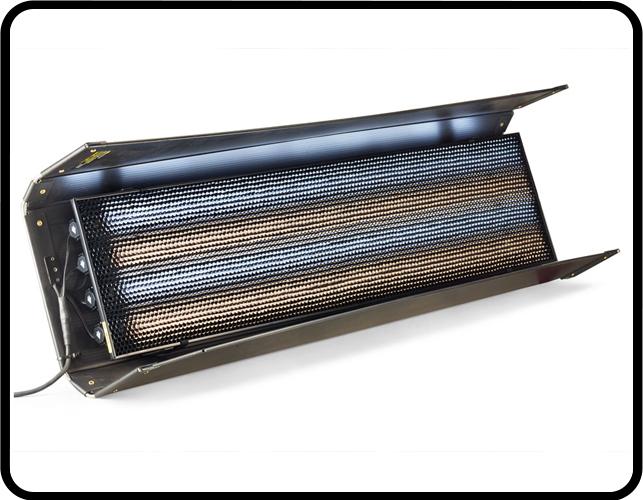
The mad scientists at Quasar Science have come out with another way to use tube fixtures. The new Q-Lion Lithium Ion battery powered Q5LS 7″, Q10LS 12″ and Q10LS 24″ fixtures. These interesting tube fixtures at first glance make you scratch your head a little but then it kicks in! I can put these anywhere.
Versatile mounting
The Q-Lion fixtures feature a high powered magnet on each end that allows them to be mounted on a metal surface. Don’t be fooled by the use of magnets to hold the fixture up because these are some pretty strong magnets which require a decent amount of force to take off.
A 3/8″ threaded receiver is also on one end. With a stud attached, this can be mounted directly to a grip head or arm and placed overhead or pretty much anywhere you need some light. I did just that and it works really great. So many options with the receiver attached.
Choose your size
Quasar Science offer the battery powered light in three sizes ranging from 7″ to 24″. All of the Q-Lion lamps are bi-color at 3000k & 5600k.
Q5LS – 7″ 5 watts – 3,350 mAh LiOn Battery – USD$100
Q10LS – 12″ 10 watt – 6,700 mAh LiOn Battery – USD$200
Q20LS – 24″ 20 watt – 13,400mAh LiOn Battery -USD$300
Powering the Q-Lion
The Q-Lion line is powered by a non-removable internal rechargeable lithium-ion battery. To recharge them you can use the supplied micro USB power adapter (9V 2A / 12V 1.5A). The lights can’t be charged with your standard smartphone charger as it requires a higher voltage. The supplied charger is needed so don’t forget to bring it to the shoot. When fully charged the “Battery Level Indicator” will show four solid bars. As you use the light the bars will decrease to let you know how much is left. Tap the button to see the fuel gauge. Likewise, when charging the bars will blink until solid.
A fully charged Q-Lion will run for approximately four hours of use at full power. A downside is the lamp can’t be used while charging. I would have liked an AC option as well for longer shooting situations. If you think you will need more run time the X-Crossfade models are a better option.
Operating the Q-Lion
The Q-Lion has a single button switch for controlling all of the light functions including adjusting brightness and colour temperature.
Single Press – Cycles through the dimming levels (OFF – 10% – 25% – 50% – 75% – 100%)
Press & Hold – Alternates between the two colour modes (3000K – 5600K)
Double Tap – Turns off the light
Light Output
The Q-Lion tube design makes them a wide beam angle fixture similar to a fluorescent tube that is commonly used in ceilings as well as the popular Kino Flo style tubes used in the Divas. The broad soft beam angle washes the area with light and tapers off. This type of light is hard to control from spilling on other parts of the scene however I don’t look at this as a negative because that’s what the fixture is designed to do. To control the spill you will need to flag them off as there are no barn door attachments.
The LEDs are housed inside a black base that prevents light from falling out of the back and also where the battery is located. They aren’t deep inside the base sitting almost even to the top of 1″ housing. This gives the fixture more output from the sides since the LED’s aren’t recessed in the base. The light does lose strength on the sides.
Q20 – 24″ 20-watt Color Rendering
To test the color and output I used a Sekonic C-700 color meter from one meter away to the fixture, and here are the key ratings.
The Q20 CRI (Color Rendering Index) average of R1-R8 is 96.9 CRI. For the important skin tone range of R1, R2, R9, R13 and R15 all come in over 97 CRI. These are very solid numbers.
In 5600K The fixture came in at 5594K with a LUX reading of 594 or 55.4 footcandles from one meter. When switched to tungsten the meter measured a rating of 3067K.
Daylight Output from 1 meter
Q5LS – 7″
LUX 105 or 9.8 FC
5548K
Q10LS – 12″
LUX 278 or 25.8 FC
5526K
Q20LS – 24″
LUX 594 or 55.4
5594K
The color and output in Tungsten
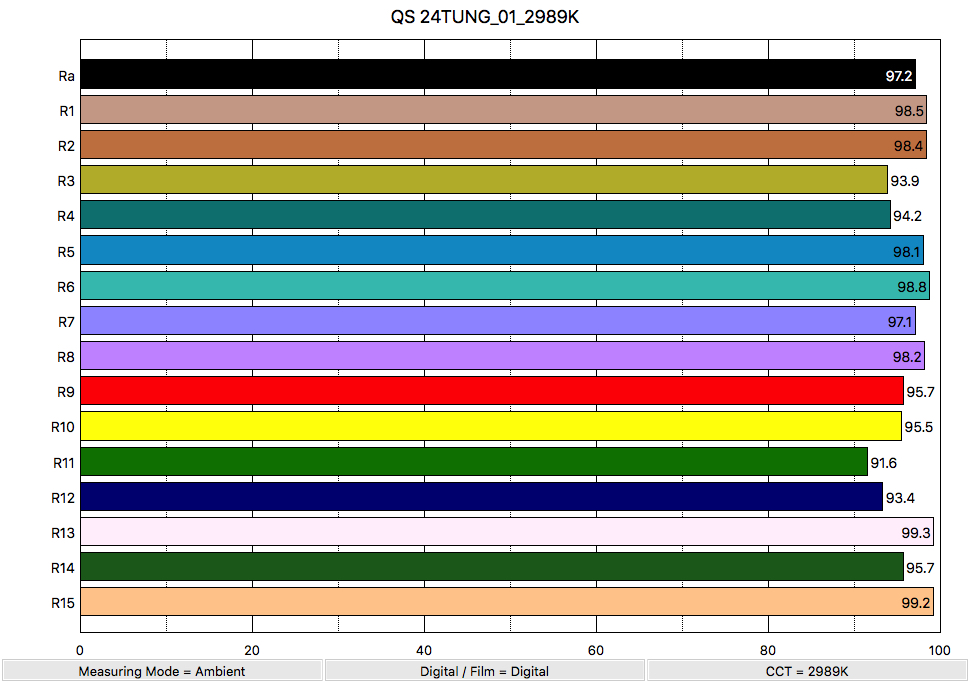 In tungsten mode, the readings are also pretty good.
In tungsten mode, the readings are also pretty good.
When set to tungsten, the Q20 24″ CRI (Color Rendering Index) average of R1-R8 is 97.2 CRI. The skin tone readings of R1, R2, R9, R13 and R15 all come in over 98 CRI. The overall CRI is 96.50.
It’s important to know that as you move a fixture farther away from the subject the Kelvin does shift. This is common with all lights.
Tungsten output from 1 meter
Q5LS – 7″
LUX 99.3 or 9.2 FC
2823K
Q10LS – 12″
LUX 243 or 22.6 FC
2998K
Q20LS – 24″
LUX 611 or 56.8
2989K
Real-world Usage
I’ve found so many great ways to use these lights. My favorite is adding a 3/8 pin to the bottom and mounting it in a grip head or arm to get the light where I need it. Being able to just attach it to the base of a stand is really great for some quick fill. I’ve also attached them to an arm on a c-stand for a quick top light. For the review, I did on the Movcam GH5 cage I used the Q-Lion to add some fill or accent on the cage with the GH5 attached.
It was so easy and just made the shots look really great. The lights are bright and I never seem to use them at full power for closer situations. 50% or less was perfect. This is good news because if you need more fill you have a little left over.
At my day job in local broadcast I had them on my production cart in the studio while doing a shoot and needed a little fill since the lighting on the set was more frontal and talent was looking at my camera from the side. Instead of grabbing another AC light I grabbed the Q10 and set it for just the right amount. Worked great! They’re really versatile, plus the color is very accurate. Nice combo!
Here I used the 24″ and 12″ for a quick standup in the studio. In this position, I don’t have any light from the studio’s grid. It’s not a position that is used. I shot this with a GH5 at 2.8 ISO 200. White balance set to 5600K. Both lamps set at 75%. I didn’t want to do any modeling so I boomed the 24″ closer to the camera and used the smaller 12″ as a fill.
Competition
LED lighting is a competitive space. With the Q-Lion, Quasar Science has delivered a simple but effective and accurate light without a lot of the higher end features like wireless app control to keep the price down. In comparison to the Westcott Icelight 2 at USD$500, the Q-Lion lights are a lot more affordable. Quasar Science also offer a 10-year warranty on the Q-Lion lights.
Of course, there are some limitations to the Q-Lion such as not being able to be powered via AC power. If you need more flexibility in a similar form factor, consider looking at the BB&S Pipeline, Quasar Science X-Crossfade and the upcoming Digital Sputnik Voyager lights.
Conclusion
Now, I did find a few things I would have liked better. One is the way they dim. I would have preferred a dial as opposed to a step system. This way I can get just the amount I need and can go back to a brighter setting without cycling through all the settings. Also when you power them down they revert to full output when turned back on. Since they are battery powered it does take some time to charge them, however with the four hours of run time they do last quite some time on a single charge.
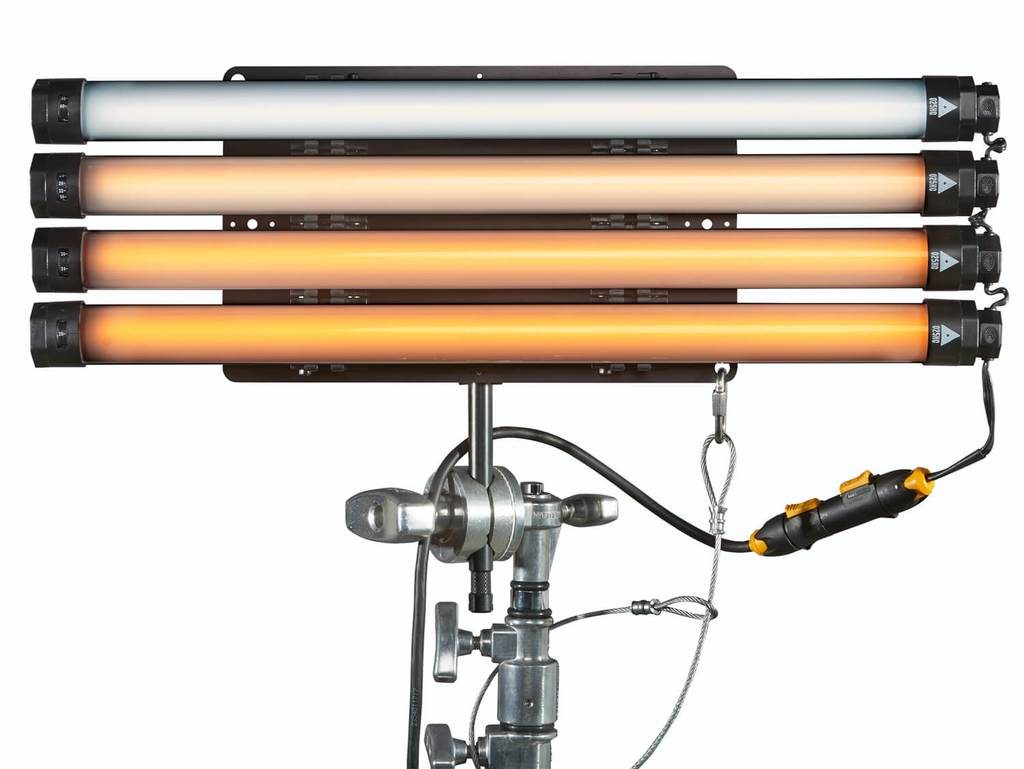
Definitely, check out other Quasar Science products. They have a new mounting accessory for the Q-LED X-Crossfade line using the Matthews “MyWay Plates”. These are made by Matthews Grip and work with a variety of configurations. The new mounting system makes it easy to mount several tubes or only one to a secure base plate. It’s basically like the Kino Flo Diva but without the shell and you can use any length of lamp you want.
Can you see the possibilities with these new Q-Lion Lithium-Ion tube lamps? Let’s talk in the comments section below.

